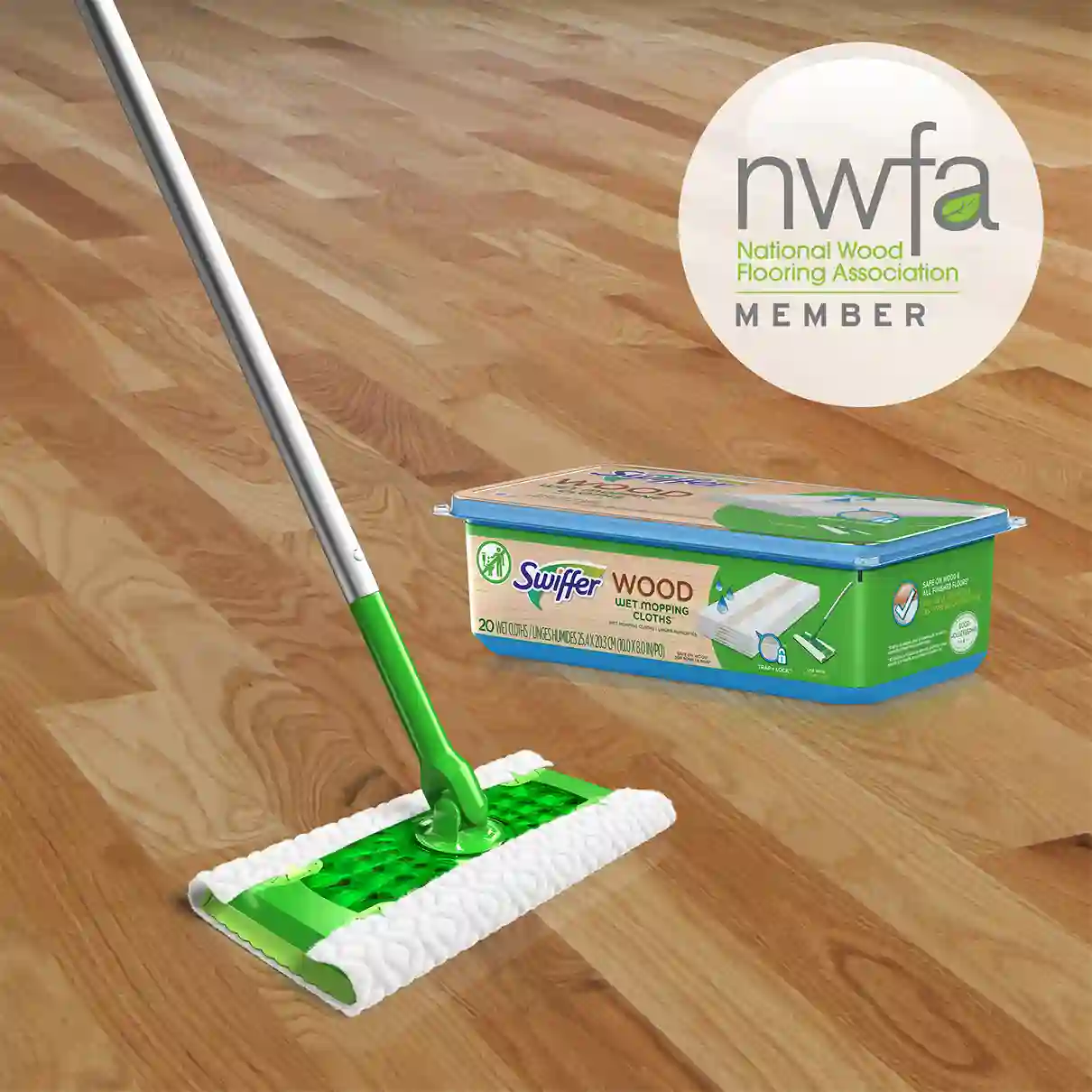Picture this: You’re finally tackling that dust bunny army taking over your living room. You grab your trusty Swiffer, ready to conquer the mess. But wait! Your beautiful wood floors are gleaming beneath the dust. Can you use your Swiffer on them, or will it lead to a flooring disaster?

Image: mromavolley.com
We’ve all been there, wondering if our favorite cleaning tools are safe for our cherished wood floors. Swiffers, with their sleek design and convenient disposable pads, seem like a cleaning dream – but are they actually a friend or foe to your wood floors? Let’s delve into the depths of this cleaning dilemma and uncover the truth about using a Swiffer on wood floors.
The Truth about Swiffers and Wood Floors
The short answer to the question, “Can you use a Swiffer on wood floors?” is: it depends. Using a Swiffer on your wood floors can be both a blessing and a curse. The key lies in understanding the different types of Swiffer products and their potential impact on your flooring.
Understanding The Different Types of Swiffers
There’s a reason why we say “it depends” when it comes to Swiffers and wood floors. There are three main types of Swiffers:
- Swiffer WetJet: This powerful mop uses a solution-soaked pad to clean floors. While it’s a popular choice for cleaning grime and spills, its effectiveness on wood floors is debatable.
- Swiffer Sweeper: A dry, microfiber pad that traps dust and dirt – a great option for quick cleaning and touch-ups.
- Swiffer Duster: Designed for dusting surfaces, it usually has a dry, microfiber pad which is good for picking up dust and debris.
The WetJet Dilemma: Potential Risks and Precautions
The Swiffer WetJet, despite its cleaning power, can pose a threat to your wood floors. Here’s why:
- Excessive Moisture: Using a WetJet on your wood floor can lead to excessive moisture, which can cause warping, swelling, and even mold growth over time.
- The WetJet’s Solution: Some wet-cleaning solutions can contain harsh chemicals that can strip your wood’s finish and leave it dull and vulnerable to scratches.
So, is using a WetJet on wood floors always a big “no”? Not exactly.
- Use it sparingly: Don’t rely on the WetJet for everyday cleaning. Reserve it for tackling tough spills or sticky messes.
- Choose a wood-floor safe solution: Look for cleaning solutions specifically formulated for wood floors. Avoid solutions with harsh chemicals or high pH levels.
- Damp, not soaking wet: Opt for a gently dampened pad, and wring out excess moisture before applying it to your floors.
- Always test first: Choose a discreet area of your wood floor and do a patch test with the WetJet and solution before tackling the entire floor.

Image: tilen.space
The Dry Sweeper and Duster: Safe for Wood Floors (Most of the Time)
Swiffer Sweepers and Dusters, with their dry microfiber pads, are generally safe for wood floors. They pick up dust and dirt without leaving behind moisture or harsh chemicals.
- Dusting and Light Cleaning: Use the Sweeper or Duster for routine maintenance and quick clean-ups.
- Gentle Swiping: Apply gentle pressure and avoid aggressive scrubbing.
- Avoid Gritty Debris: Always use the appropriate Swiffer pad for your floor type. Avoid using a Swiffer Sweeper or Duster with a heavily soiled pad on your wood floors.
Alternative Cleaning Methods for Your Wood Floors
While Swiffers can be a quick and convenient cleaning solution, there are other, equally effective methods to keep your wood floors gleaming.
- Dusting: For routine cleaning, a simple microfiber dust mop or cloth is sufficient.
- Sweeping: A traditional broom and dustpan are the classic way to remove debris from wood floors.
- Mop: A damp mop with a safe cleaning solution is an excellent choice for tackling grime and spills.
The Importance of Floor Type and Finish
When navigating the world of Swiffers and wood floors, it’s crucial to consider the specific type of wood and finish on your floor. Here’s why:
- Unsealed Floors: These floors lack a protective layer, making them highly susceptible to damage from moisture and chemicals. Avoid using WetJets or any harsh cleaning solutions on unsealed wood floors. Stick to sweeping, dusting, or using a damp mop with a mild, wood-floor safe cleaning solution.
- Sealed Floors: These floors have a protective finish that helps shield them from moisture, dirt, and scratches.
Knowing the type of finish on your wood floors is essential.
- Oil-based Finish: These finishes are durable and require less frequent cleaning.
- Polyurethane Finish: This is the most popular type of finish, offering excellent protection against moisture and scratches.
No matter what your wood flooring type or finish, it’s always recommended to consult the care instructions provided by the manufacturer.
Expert Tips to Keep Your Wood Floors Gleaming
Here are some expert tips to safeguard your precious wood floors and ensure their longevity:
- Regular Dusting: Dusting your floors regularly with a microfiber dust mop or cloth helps prevent dirt and debris from scratching the surface.
- Spot Cleaning: Address spills and stains promptly to prevent them from setting in.
- Professional Cleaning: Consider scheduling professional wood-floor cleaning every 1-2 years to maintain the finish and protect your floors.
Can You Use A Swiffer On Wood Floors
Conclusion
Using a Swiffer on your wood floors can be risky, but it doesn’t have to be a cleaning nightmare. By understanding the different types of Swiffers and their potential impact on your floors, you can make informed decisions on how to utilize them safely and effectively. Always prioritize gentle cleaning methods, be mindful of your floor type and finish, and consult with professionals when necessary. With care and attention, you can keep your wood floors looking beautiful and lasting for years to come.






